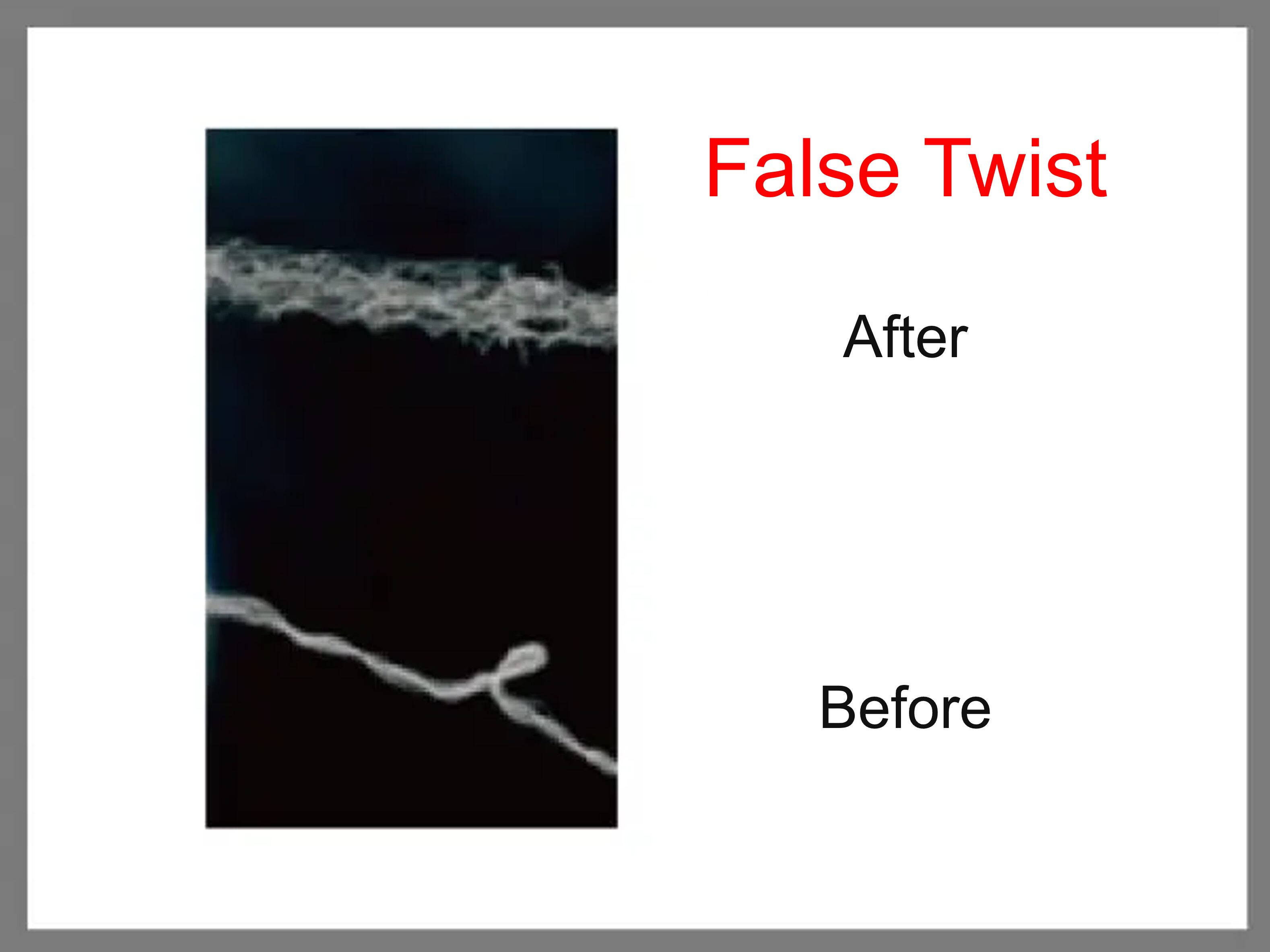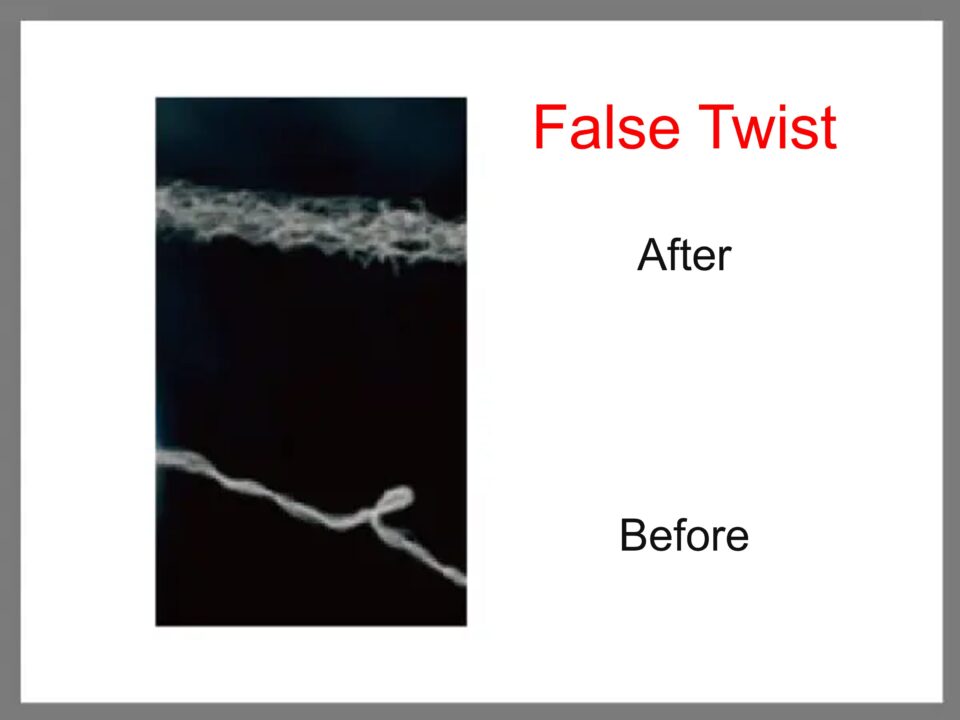KNIT MAGAZINE
- Yarn/Fiber
Let’s Talk About “False Twist”

- Post date:
- August 20, 2025 07:00
- (Update: August 15, 2025 00:12)
KNIT MAGAZINE


Do you know “False Twist”? Today I’m talking about False Twist quickly.
Table of Contents
Hokuriku region of Japan is one of the major production areas for synthetic fibers.
It originally flourished with natural silk production, but during an economic downturn, rayon (also known as artificial silk) was developed to imitate silk. Later, the industry transitioned to producing synthetic fibers.
False twist (false twist texturing) is a method applied mainly to the long filaments of synthetic fibers, such as polyester or nylon.
In this process, the yarn is first twisted, then heated, and finally untwisted. Because the yarn is “temporarily” twisted and then untwisted, it’s called “false twist”
This process uses the thermoplastic properties of synthetic fibers to give the yarn crimp.
Crimped yarn becomes bulkier, more elastic, and stretchable.
Because the yarn can expand and contract, the resulting fabrics are warmer and more comfortable to wear.

There are several types of false twist methods:
The main difference lies in the type of machinery used for the untwisting part of the process.
Among these, the PIN type method is especially notable.
It has been developed and perfected in a small factory in the Hokuriku region of Japan.
In this method, the yarn is twisted at low speed around a pin-like rotor. This produces yarn with exceptional bulk, lightness, and a unique soft texture.
This material has both volume and resilience, with very little snagging.
When knitted at a tight gauge, it’s perfect for creating garments with a defined silhouette.
This is water repellent yarn.
These yarns are made by PIN false twist method with recycled materials. Thanks to the PIN false-twist stretch processing, these fabrics exhibit remarkable volume, making them resistant to wrinkles. Simply smoothing the fabric with your hands restores it to its original state, unlike conventional cotton-polyester blends.
Today, I gave a quick overview of “False Twist.”
I hope this helps deepen your understanding of textiles.
See you next time!
Subscribe Now
To receive the latest updates and insights, subscribe to our newsletter.
Contact Us
For further inquiries regarding this article, please feel free to contact us.